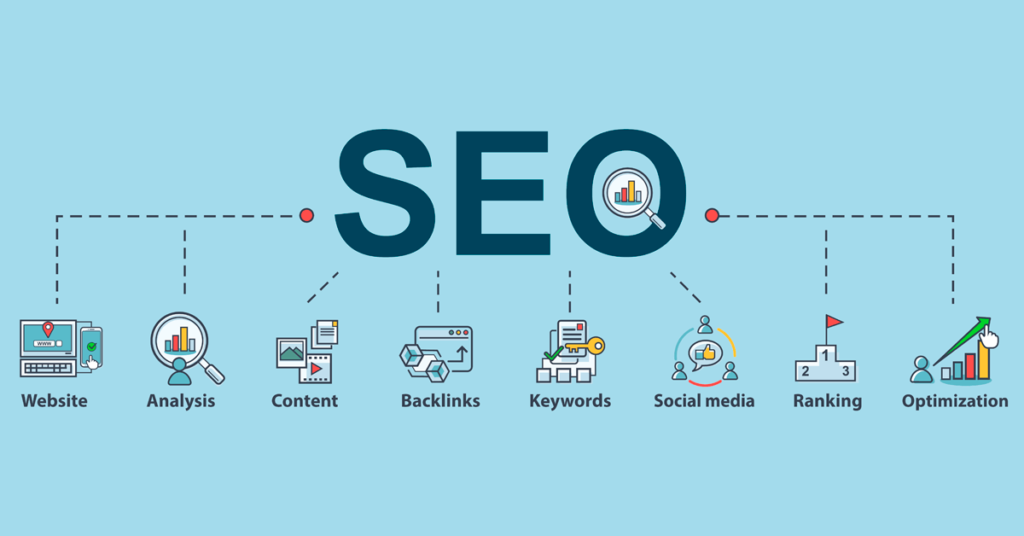
If you're wondering how to write SEO content, then read this article. You will learn how to outline the article, research keywords, incorporate secondary keywords, and what to do with them. Do not forget to include transition words. Once you've got your content written, it's time to optimize it for search engines! Read on for some great tips! These are some of our top tips to make your article more search-engine friendly.
Draw a outline of your content
An effective strategy to ensure your article's SEO content is search engine-friendly is to outline it. Although there are many options for structuring your outline, the C.R.A.A.P. is the most popular. method is a simple way to get a starting point. The following are some examples of how to structure an outline:
An outline can be used to help you determine the sections that are necessary and identify any thin areas. It can help you decide if to merge more than one topic or if certain sections should be nested. The outline will help you to identify who your target audience are, as keyword placement should not be the only consideration. A good outline will include all the elements needed to write an excellent blog post. There are several benefits to writing an outline for your SEO content.
Make a quick outline of what content you will be writing. In this outline, include your primary keyword as well as a list of related terms. You should also consider your target audience, word count and audience. Include any core questions that you wish to answer, call for action, and suggested title and meta descriptions. Make sure to outline subheadings and links. Using a content outline helps you achieve cohesion in your content and make the most of your writing time.
A purpose should be the focus of your blog posts. Avoid using cliches or cliches. Your blog post should be interesting and relevant to your target audience. In the introduction, include your target audience. This will make your audience more interested in the content. Because they will find it more readable, Before you begin writing, make sure to outline your SEO content. It can even help you write better blog posts.
Research your keywords
There are several steps that you can follow to research your keywords. First, you need to know which keywords are most relevant. You might feel your articles are irrelevant to your topic. But if Google Trends is used or AdWords is used, you can easily identify the most popular keywords within your niche. Once you've identified the most popular keywords, start thinking about how to fit your content to your keyword strategy.

Remember that keyword research does not involve tricking Google. It is about determining what your audience wants to read. Understanding how your audience searches will help you create content they will love to read. A blog post on Thailand could be titled "Thailand travel guide", or it could refer to a guide for humans traveling in Thailand. High rankings will be achieved if your content is relevant to the search terms and addresses the needs of your target audience.
Once you have found the keywords you want, it's time to start researching them. Google search for these keywords and check the results. Do some comparisons between your competitors and their websites to determine which ones perform better for your target audience. You should also consider the user intention. Does the keyword indicate that users want a Thailand guidebook? It would be more effective to write about a specific place if this is the case.
Also, you should check the monthly search volume for your targeted keywords. You can analyze the MSV of your selected keywords to find out how many times they appear first in the SERP. You can use this information to target more keywords for SEO content. Once you have compiled a list keywords, you are able to create blog posts or articles based upon each keyword. You should also review your content and check for any keyword cannibalization.
Add secondary keywords
A variety of reasons make secondary keywords a smart choice in SEO content. The first is that it improves the content quality and appeals to your readers. Second, it helps you avoid writing articles focused solely on your primary keyword, which is unlikely to match the reader's intentions. The secondary keywords allow you to better match your audience's expectations and create a more natural tone in your articles.
Using the right keywords in your content is important for your SEO efforts. It will help your readers navigate your articles and increase their chances of getting found in search results. Your primary keywords should be used in the title of your article, the metatag description and the first paragraph. They should have a density between three and five percent. Secondary keywords can be included in one or two instances throughout your content. This is an excellent way to improve your content's visibility in search engines.
If used correctly, secondary keywords can help you rank higher in SEO. It is important that secondary keywords are relevant to the primary keyword. They can be used to generate more content ideas such as articles about easy chocolate cake recipes. Review the list before starting to write a section. This is the best way to include secondary keywords. Avoid repetition and use synonyms only when absolutely necessary. Use a LSI keyword search to refresh your content.
Google's autocomplete function is another way to include secondary keywords in SEO content. This feature allows users see what others are searching for and then drops the search down to a list of possible keywords. These phrases aren't random. They represent real searches people make online. Your website can be found more easily by using secondary keywords. Google Keyword Planner allows you to find out more about secondary keywords. It also helps you improve your content.
Include transition words
Using transition words can give your SEO content a leg up on competitors. Though they do not affect your overall SERPs ranking, they make your posts easier to read and improve context readability. One example is that a transition word can be used to indicate a cause or effect. This guide will explain how to use transitions words efficiently. Apply these tips to SEO content.

Transition words are used to indicate the relationships between paragraphs. Without these words, readers might not understand the connections between paragraphs, but when you use transition words, your content will read more clearly, be more engaging, and be more informative. Transition words are essential for clear, well-structured text. Use them as sparingly as possible and you'll be rewarded with better SEO.
Your readers will be alerted to any major changes by using transition words. These words can be thought of as signs along a long road. Transition words make it easier for readers to follow your content. These words aren't necessarily the best choice for every content type, but they will ensure your reader's experience with your SEO content is more pleasant and effective. For those who are new to SEO, you might consider looking at other content for insight on the use of transition words.
Yoast SEO and WordPress have built-in tools to make sure your content uses transition words. These tools can analyse your content and help you identify the times it has transition words. Optimize your SEO with three types transition words. Yoast SEO uses three types of transition words to make your content more readable and helpful. Yoast also looks for transition words with two parts:
Optimize your content for speed
There are several ways to optimize your SEO content for speed, and focusing on one of them can greatly increase your site traffic. You can gain an advantage over your competitors by following these simple guidelines. For example, you can use meta tags and keyword phrases to make your content more search engine friendly. These strategies will help you improve your page's rank on major search engines.
Use images. Images are important for search engine optimization because they make it easier for the reader to find your content. Every image cannot be indexed. It is essential that you use the alt text attribute of HTML to describe images. It must be descriptive and give context to search engines. Use HubSpot's SEO Panel to recognize optimized images. It improves user experience. You can also add relevant hyperlinks to the optimized content.
FAQ
How often is SEO needed?
If you maintain your links correctly, you don't necessarily need to update or perform SEO campaigns regularly. If you stop maintaining your link and only rely on organic traffic to bring in business, you may lose potential customers.
For small businesses, it is recommended to update your SEO every month. A quarterly update may be necessary for larger companies.
What is an SEO strategy?
SEO strategies are a great way to make sure you're not missing opportunities to grow your business. Ranking higher in search results is important, but great content can't be found by anyone.
SEO strategies can help you develop relationships with experts in your industry and influencers. With their connections and knowledge, you can learn new techniques and tricks to beat your competitors.
What do I need to know about backlinks?
Backlinks can be links that point to a webpage via a link from another website. They are one of search engines' most powerful tools to help determine the place a web page is in search results. Because they prove that others believe your content to be valuable, backlinks are particularly useful. A lot of quality backlinks is necessary if you want your content to rank high in search engine results.
Statistics
- Sean isn't alone… Blogger James Pearson recently axed hundreds of blog posts from his site… and his organic traffic increased by 30%: (backlinko.com)
- 64% of marketers actively create SEO campaigns because they help hit multiple key performance indicators (KPIs), including increasing traffic, helping your site rank for relevant keywords, improving your conversion rate, and much more. (semrush.com)
- : You might have read about the time that I used The Content Relaunch to boost my organic traffic by 260.7%: (backlinko.com)
- If two people in 10 clicks go to your site as a result, that is a 20% CTR. (semrush.com)
- 93%of online experiences today begin on search engines. (marketinginsidergroup.com)
External Links
How To
How to choose a SEO strategy that is right for you
The following factors may help you to decide the right SEO strategy.
-
Keyword Research
SEO has one primary goal: to rank highly in search engines for specific terms. You should also identify negative keyword phrases that don't relate to your audience.
-
Content Strategy
Content marketing is important for all businesses. It is important for eCommerce sites to rank high in search results pages. This drives sales and increases conversions.
Creating relevant, engaging content that solves problems and provides solutions is key.
-
Link Building
Links have a huge impact on your website's ranking in search engines. To build lasting relationships with other websites, you should focus on building them.
-
Social Media Marketing
If your website has a strong presence on social media channels, you may want to use them to promote your brand. By sharing your content on these platforms, you can encourage others to share it.
-
Website Structure
Although it isn't always possible to rank higher, good design can make a difference. A clean, simple layout improves user experience, which leads to increased conversions. Additionally, you must ensure your site loads quickly so users don't leave before completing transactions.
-
Mobile Optimization
Mobile devices account for almost half of internet usage today.If your website isn't optimized for mobile, you could lose out on traffic and potential clients.
-
Local Search
This means that your website is optimized for local searches, such "restaurants near my" or "businesses close to me". Local SEO is easier because people trust recommendations from family, friends, and colleagues.
-
Ecommerce Website Development
Ecommerce websites benefit from a range of different types of SEO strategies.For example, they often perform best when they're optimized for both desktop and mobile devices. Additionally, they are more likely to rank higher for longer-tail keywords.
-
Video Ranking
Video content is highly ranked on search engines. It ranks highly for longer queries and receives more share.
-
Branding
Branding is the process of designing a logo, product names, and messaging that gives your company its own identity and personality. This helps customers get to know you and what you do.
-
Analytics Software
Analytics software allows you to track how visitors interact with your website.The information gathered through analytics can help optimize your efforts and increase conversions.
-
Email List Management
Email lists allow you to send emails directly to your target audience.You can send messages about new products, special offers, and promotions.
-
Blogging
Blogging is another way to generate quality backlinks. Blog posts that relate to your business will bring you links from reliable sources.
-
Customer Satisfaction
Customer satisfaction is one of the most effective ways to get high-quality backlinks.When satisfied customers refer their friends and colleagues to your site, this will result in quality backlinks.
-
Content Marketing
Content marketing involves producing unique, useful, relevant content that educates, entertains, or inspires readers.
Engaging content will build trust with your target market and result in higher conversion rates.